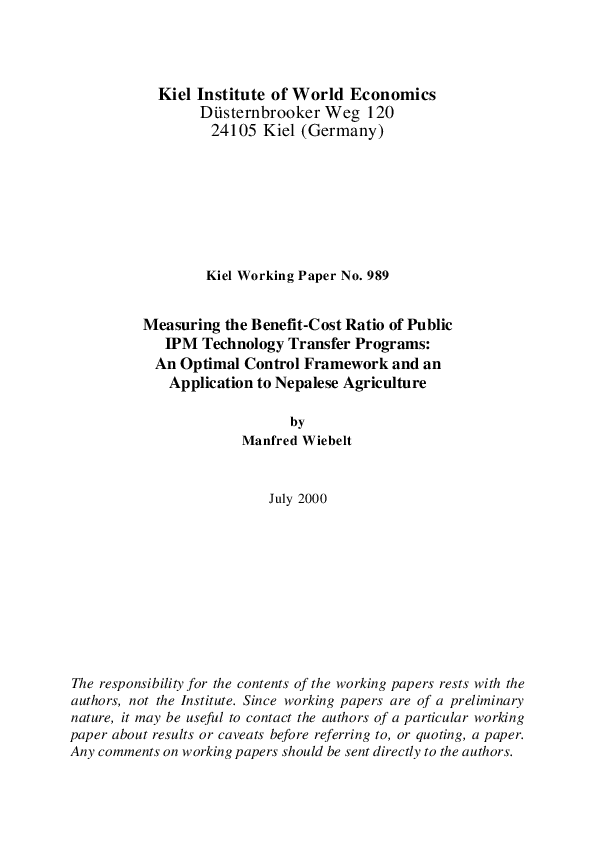Arbeitspapier
Measuring the Benefit-Cost Ratio of Public IPM Technology Transfer Programs: An Optimal Control Framework and an Application to Nepalese Agriculture
Kieler Arbeitspapiere, 989
Autoren
Erscheinungsdatum
JEL Classification
C61
D61
Q16
Q2
Schlagworte
Despite favourable ecological and economic results, many developing countries have not yet adopted an integrated pesticide management (IPM). Given rising marginal costs and diminishing marginal benefits from IPM technology transfer, an optimal control framework is used to identify optimal rates of technology transfer. The framework is applied to Nepalese agriculture to illustrate the dynamic adoption process for IPM. The results indicate that public IPM technology transfer programs should be targeted to maintain about 50% of agricultural production in IPM. The benefit-cost ratio is approximately 7.9:1. If the educational program is financed by a tax on chemical inputs the benefit-cost ratio would be 9.1:1.


